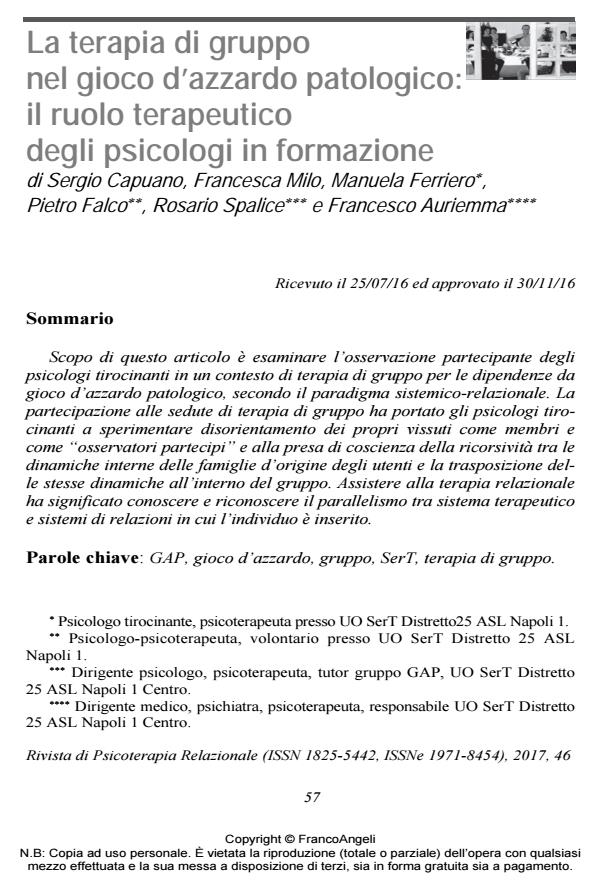La terapia di gruppo nel gioco d’azzardo patologico: il ruolo terapeutico degli psicologi in formazione
Titolo Rivista RIVISTA DI PSICOTERAPIA RELAZIONALE
Autori/Curatori Sergio Capuano, Francesca Milo, Manuela Ferriero, Pietro Falco, Rosario Spalice, Francesco Auriemma
Anno di pubblicazione 2017 Fascicolo 2017/46
Lingua Italiano Numero pagine 15 P. 57-71 Dimensione file 194 KB
DOI 10.3280/PR2017-046005
Il DOI è il codice a barre della proprietà intellettuale: per saperne di più
clicca qui
Qui sotto puoi vedere in anteprima la prima pagina di questo articolo.
Se questo articolo ti interessa, lo puoi acquistare (e scaricare in formato pdf) seguendo le facili indicazioni per acquistare il download credit. Acquista Download Credits per scaricare questo Articolo in formato PDF

FrancoAngeli è membro della Publishers International Linking Association, Inc (PILA)associazione indipendente e non profit per facilitare (attraverso i servizi tecnologici implementati da CrossRef.org) l’accesso degli studiosi ai contenuti digitali nelle pubblicazioni professionali e scientifiche
Scopo di questo articolo è esaminare l’osservazione partecipante degli psicologi tirocinanti in un contesto di terapia di gruppo per le dipendenze da gioco d’azzardo patologico, secondo il paradigma sistemico-relazionale. La partecipazione alle sedute di terapia di gruppo ha portato gli psicologi tirocinanti a sperimentare disorientamento dei propri vissuti come membri e come "osservatori partecipi" e alla presa di coscienza della ricorsività tra le dinamiche interne delle famiglie d’origine degli utenti e la trasposizione delle stesse dinamiche all’interno del gruppo. Assistere alla terapia relazionale ha significato conoscere e riconoscere il parallelismo tra sistema terapeutico e sistemi di relazioni in cui l’individuo è inserito.
Parole chiave:GAP, gioco d’azzardo, gruppo, SerT, terapia di gruppo.
Sergio Capuano, Francesca Milo, Manuela Ferriero, Pietro Falco, Rosario Spalice, Francesco Auriemma, La terapia di gruppo nel gioco d’azzardo patologico: il ruolo terapeutico degli psicologi in formazione in "RIVISTA DI PSICOTERAPIA RELAZIONALE " 46/2017, pp 57-71, DOI: 10.3280/PR2017-046005